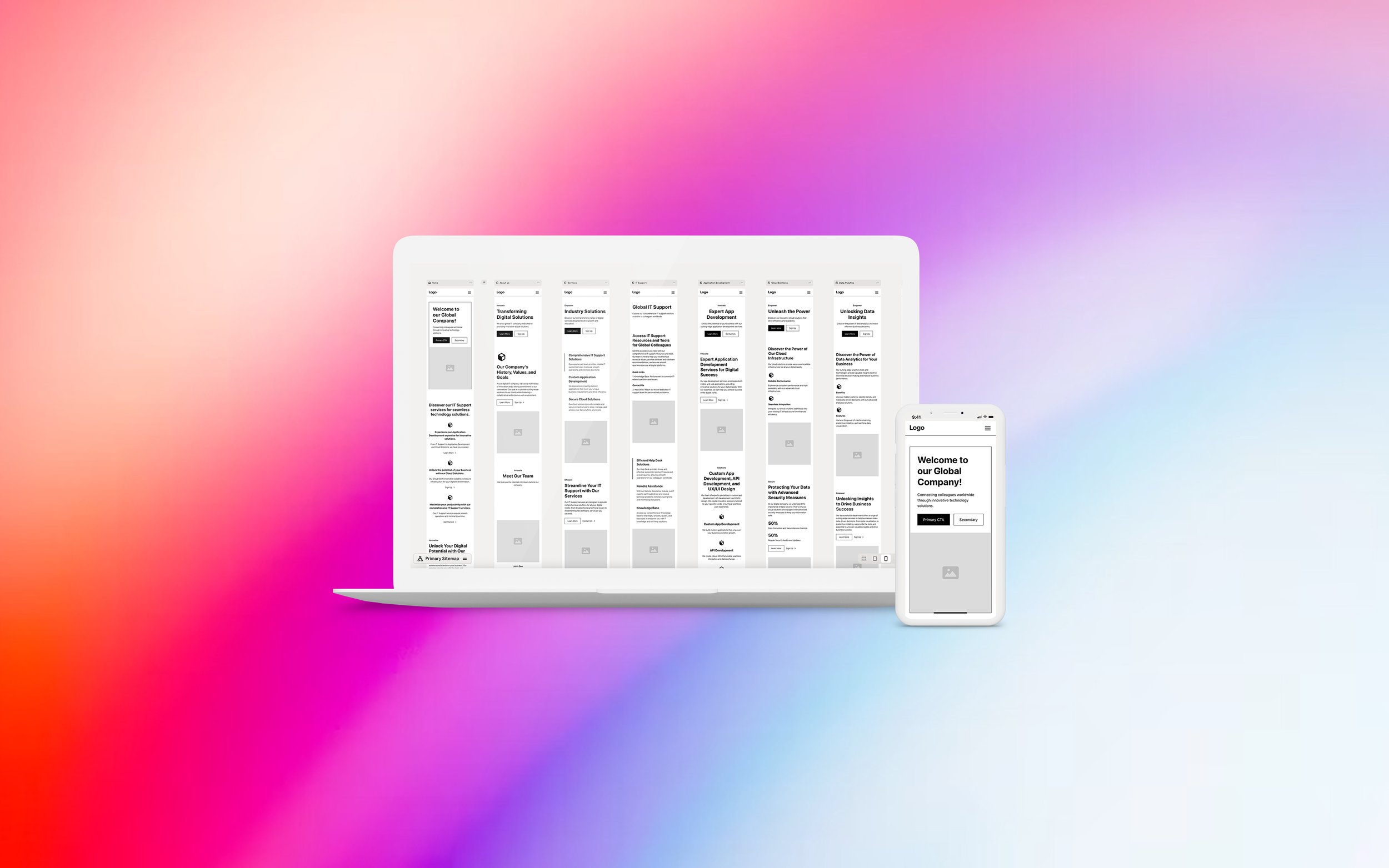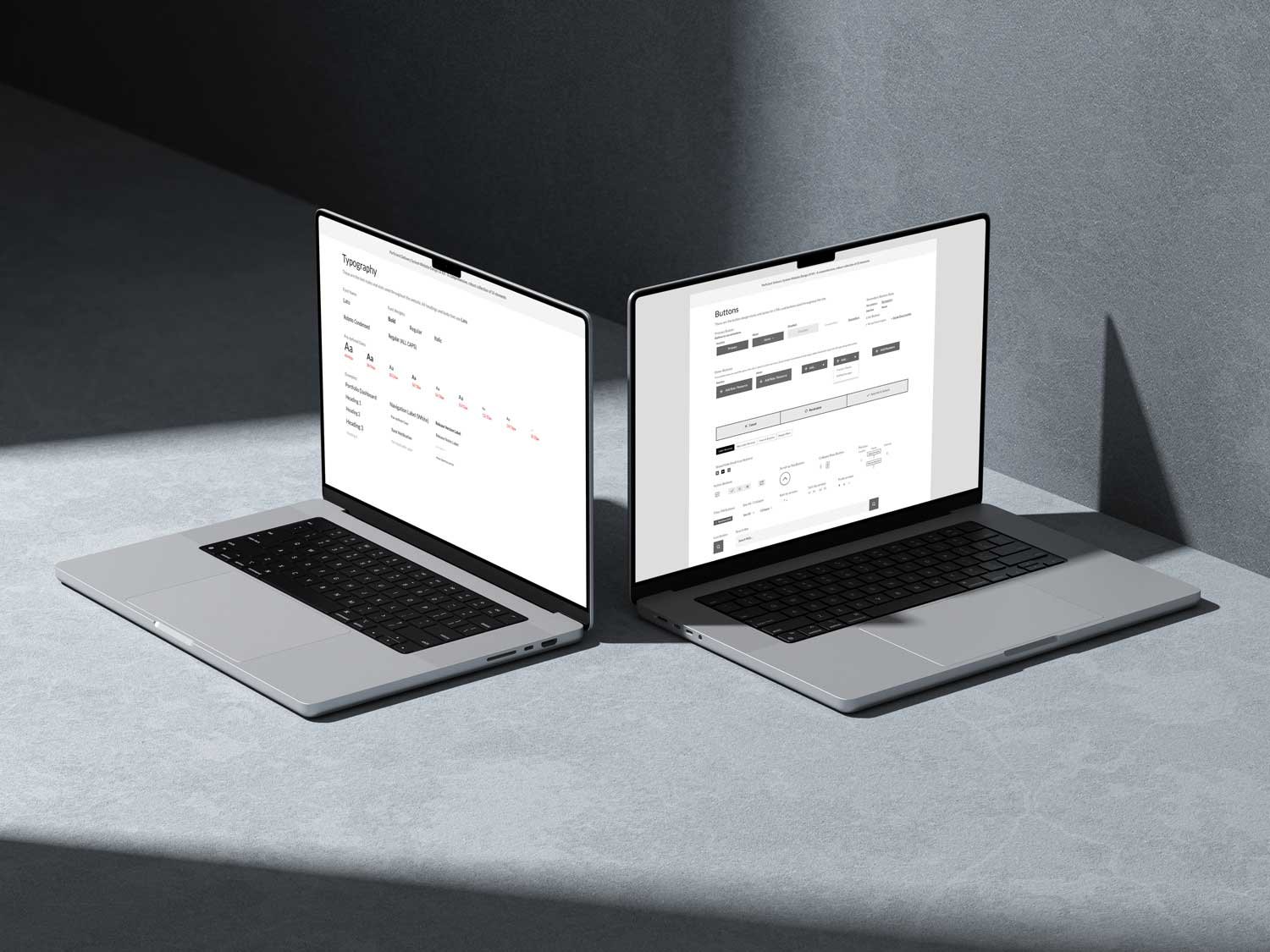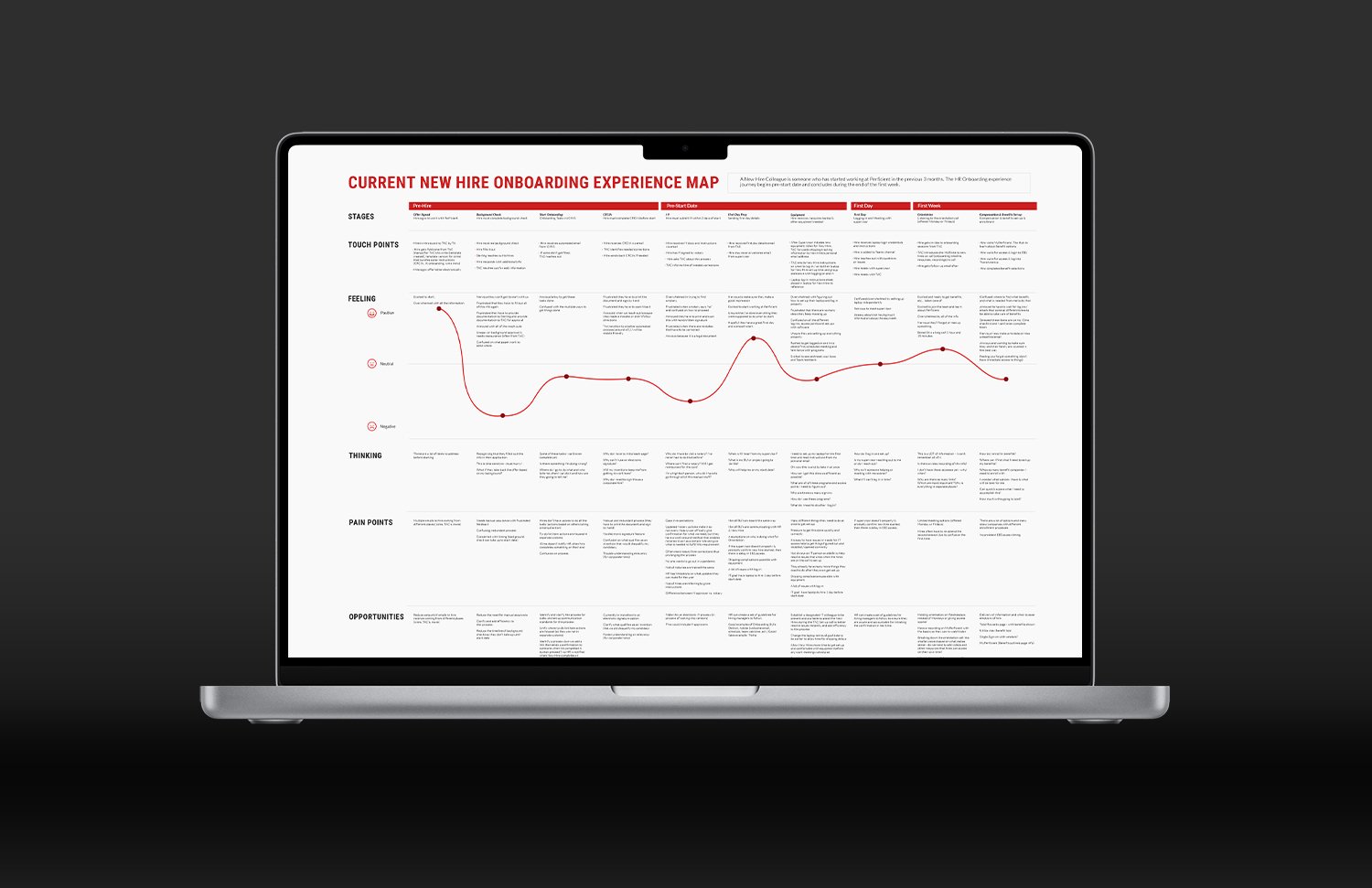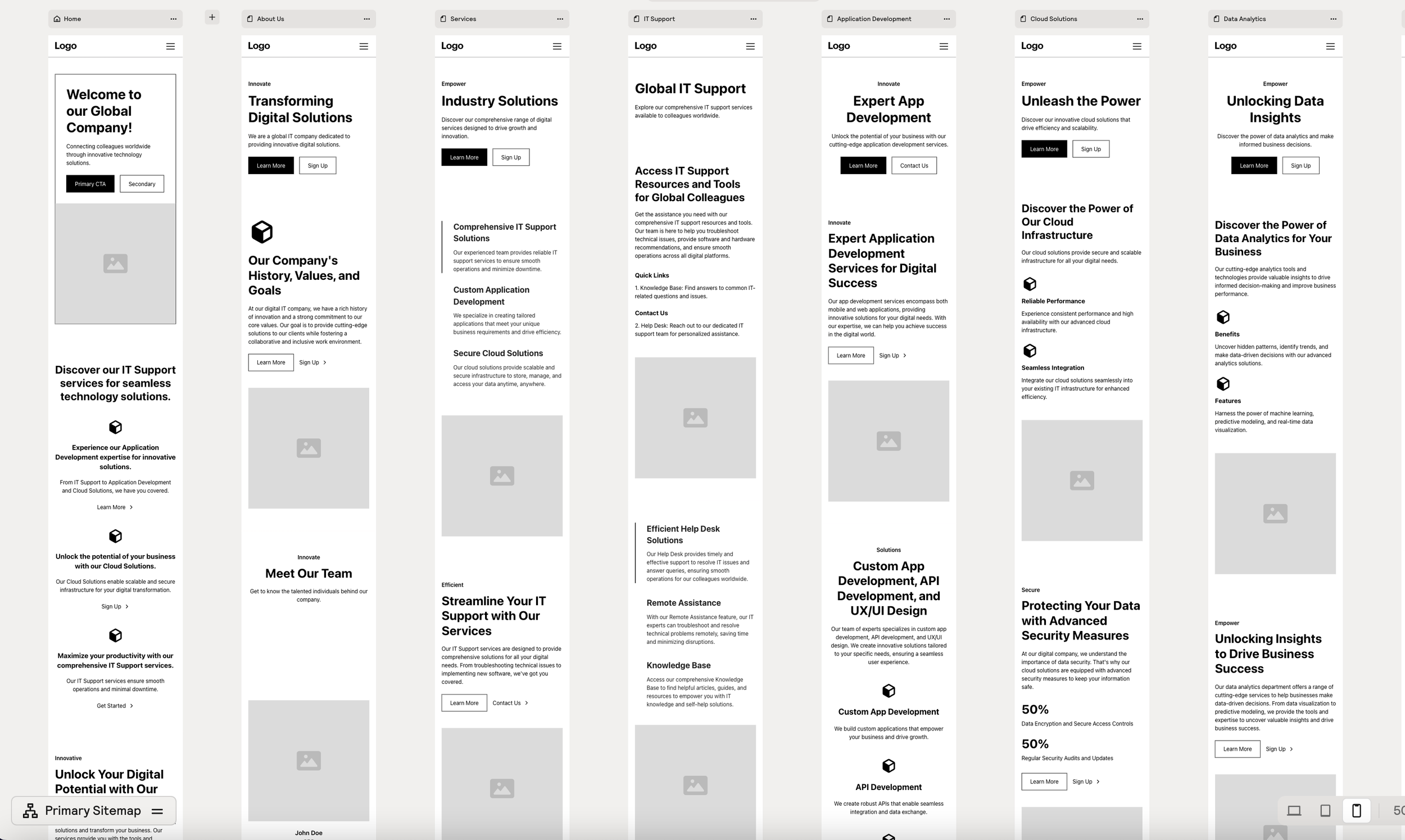
About the project
Problem
Our current intranet is a disjointed, frustrating experience that fails to meet the needs of our workforce. Rather than serving as a centralized hub for critical information and resources, the intranet is a scattered, haphazard collection of disparate pages and portals that are difficult to navigate and often out of date. Employees struggle to locate the documents, tools, and data they require, wasting valuable time and growing increasingly disengaged as they futilely search through the chaotic interface. The lack of a cohesive, user-friendly design undermines the intranet's purpose, leaving it fragmented and ineffective. Key features and functionalities are buried beneath layers of confusing menus and dead-end links, forcing staff to resort to workarounds and unofficial channels to accomplish basic tasks.
This disorganized, segmented approach not only hampers productivity, but also damages morale and impedes the flow of important company information. Overhauling the intranet to provide a seamless, intuitive experience should be a top priority, as a well-designed, centralized platform is essential for empowering employees, streamlining operations, and cultivating a more engaged, connected workforce.
Our Project Team
Sr. Developer
Sr. Project manager
Systems Admin
Designer (myself)
Product BA
Product Owner
My Role & Deliverables
User Experience Design
User Interface Design
User Research Lead: Activities, Studies, surveys, interviews, personas
Design System Creation
Wireframes & Prototypes
Web Design
Data Analysis & Solution Strategy
UAT
Personas
Project Creative Brief
Objective
The primary objective of this project is to create a comprehensive, user-friendly employee intranet that brings together all of the company's existing digital content and resources into a centralized, cohesive platform. The aim is to establish a shared understanding and access point for vital information, tools, and communication across the organization. Currently, employees must navigate a fragmented landscape of disparate systems, applications, and siloed data - creating inefficiencies, redundancy, and a lack of visibility. This new intranet will serve as a powerful digital hub, seamlessly integrating and unifying everything from HR policies and employee profiles to project management dashboards and internal social forums.
By consolidating this content in an intuitive, easy-to-use interface, the intranet will empower staff to quickly find what they need, collaborate more effectively, and stay up-to-date on important updates and initiatives. The end result will be a dynamic, user-friendly gateway that fosters a stronger sense of organizational alignment, knowledge-sharing, and community - all while streamlining daily workflows and driving productivity gains across the business. This strategic investment in the employee experience will pay dividends in the form of heightened engagement, retention, and overall competitiveness in the market.
Research
User Analytics
User Studies
Tree Jacks
Surveys
User Interviews
Competitor Analysis
Personas
Project Creative Brief
User Flows
Accomplishments
1 Hub Master Site, 8 Site Collections, 85 web pages created & launched in 7 months
Improved User Engagement in 6 months of Intranet launch
Improved Intranet Search functionality, leading to an increase in user engagement and efficiencies
Decrease in time spent searching for information leading to increased productivity
Improved Onboarding experience for New Hires
Improved Employee User Satisfaction in accessing critical company information
Research & Analysis
User Survey
The user survey for our consultancy's intranet website reveals a tapestry of insights that not only affirms the necessity of continuous improvement but also illuminates the diverse user experience landscape within our company. The data, rich with feedback from our valued colleagues, paints a vivid picture of how the current intranet serves as a backbone for collaboration and knowledge sharing, while also highlighting areas ripe for innovation.
Overwhelmingly, the survey respondents emphasized the critical role the intranet plays in their daily workflows. The intranet is seen as a central hub for accessing resources, staying informed about company news, and connecting with teams across the globe. The clean and intuitive design was appreciated, with many noting the ease of navigation and the ability to quickly locate essential documents and tools. The responsive layout, which adapts to various devices, received high praise, reflecting the modern workforce's demand for flexibility and accessibility. This underscores the importance of maintaining a user-centric approach in our digital workplace strategy.
However, the survey also uncovered a few challenges that our users face. Some colleagues reported difficulty in finding specific information, suggesting that the current search functionality could be enhanced. This presents an opportunity to implement advanced algorithms and machine learning capabilities to tailor search results to individual preferences and improve the overall information discovery experience. Additionally, a significant number of respondents expressed a desire for more personalized content, indicating a need to refine our content curation and recommendation systems to serve up relevant and timely updates.
Collaboration tools within the intranet were another area of focus. While the existing suite of applications is widely recognized for fostering teamwork, there's an evident hunger for more seamless integration and feature-rich options. The feedback suggests a need to explore new tools and enhance current ones to better support our colleagues' diverse collaboration needs, from real-time editing of documents to more dynamic ways of sharing ideas and knowledge. This could potentially lead to a more interactive and engaging intranet that mirrors the collaborative spirit of our company culture.
Lastly, the survey highlighted the importance of mobile optimization. As our workforce becomes increasingly mobile, it's clear that the intranet must evolve to meet the demands of colleagues on the go. Enhancing the mobile experience could include developing native apps, optimizing page load times, and ensuring that all content and features are accessible and functional on various devices. This would empower our teams to stay connected and productive regardless of their location.
The survey results paint a clear picture of the integral role the company's intranet plays in day-to-day operations, underscoring its foundational importance to the organization as a whole. While the intranet is already a valuable resource, the insights gleaned from the survey provide a roadmap for enhancing its capabilities and transforming it into an even more robust, user-friendly digital workplace. By addressing the specific pain points and pain points identified by employees, the company can make strategic improvements that will have a tangible impact on productivity, collaboration, and overall engagement.
For example, streamlining navigation and search functionality, integrating key tools and applications, and optimizing the mobile experience are all areas ripe for refinement based on user feedback. Empowering employees with a more intuitive, intelligent intranet will unlock new levels of efficiency, allowing them to quickly find the information and resources they need to excel in their roles. Additionally, injecting more interactive and personalized elements into the intranet design will foster a greater sense of community and connectedness among the global workforce - a critical factor for maintaining morale and camaraderie in today's increasingly distributed work environments.
Ultimately, the survey results serve as a guiding light, illuminating the path towards an intranet that not only meets but exceeds the evolving needs and expectations of the company's employees. By embracing these insights and charting a course for strategic modernization, the organization can position its digital workplace as a true competitive advantage - a centralized hub that empowers, engages, and delights users, while simultaneously driving increased productivity, collaboration, and overall business success. This forward-thinking approach will cement the intranet's status as a vital, indispensable tool that is fundamental to the company's operations and growth.
New Hire Experience Journey Map
Using the data from the user survey, we developed a New Hire Experience journey map to illustrate the onboarding process and identify opportunities for improvement. This visual representation of the employee’s journey from the first day to their first 90 days on the job highlighted critical touchpoints where the intranet could be leveraged to enhance the overall experience. For instance, we found that new colleagues often struggled to locate essential information such as company policies, benefits, and team structures. By mapping out the emotional and practical aspects of the onboarding journey, we were able to identify opportunities to integrate these elements into the intranet and create a more intuitive and supportive environment for new hires.
Personas
To ensure that the intranet catered to the needs of the existing workforce, we developed a persona for the typical current colleague. This profile encompassed their daily tasks, challenges, and goals, providing a human-centered perspective on how the intranet could best serve them. The current colleague is a tech-savvy professional who requires quick access to resources, collaboration tools, and company updates. They are often juggling multiple projects and time zones, so the intranet must be efficient and user-friendly. The persona helped us to prioritize features such as an advanced search function, centralized document management, and personalized dashboards that aggregate relevant information.
Similarly, we created a New Colleague persona to understand the unique challenges faced by employees during their onboarding process. This persona focuses on the learning curve associated with a new workplace and the importance of clear communication and support. By empathizing with their needs, we were able to tailor the intranet’s onboarding section to provide a step-by-step guide to company culture, policies, and procedures, as well as facilitate connections with team members and mentors.
Our Manager persona was crucial in addressing the requirements of those responsible for guiding and leading teams. This persona highlighted the need for a robust set of tools that would enable managers to track team performance, access employee profiles, and manage training and development programs. The intranet was also designed to serve as a central hub for sharing best practices and fostering knowledge sharing across the organization.
Competitor Analysis
For our Intranet website, an in-depth analysis conducted of the user experiences offered by three industry leaders. The goal was to understand their strengths and weaknesses in order to optimize this new intranet solution and offer a more superior and user-centric experience to our employees.
Competitor #1’s intranet presents a clean and modern interface that emphasizes ease of navigation and quick access to essential resources. The homepage features a clear menu structure with dropdowns that categorize information neatly. The use of vibrant color schemes and professional imagery aligns well with the company's brand identity, creating a visually appealing and engaging environment. However, the content seems to be dense and text-heavy, which could potentially overwhelm users searching for quick updates or information. The search functionality is robust but could benefit from more intuitive predictive capabilities to enhance the overall findability of resources. Additionally, the mobile responsiveness of the site could be improved to provide a more seamless experience for employees on-the-go.
Furthermore, Competitor #1's intranet boasts a comprehensive suite of collaboration tools, fostering effective communication and teamwork among employees, although the integration of these tools into the main interface could be more seamless to prevent disruptions in workflow. The platform also features a personalized dashboard for each user, offering tailored content and notifications that are relevant to their roles and responsibilities, yet the customization options seem somewhat limited, potentially reducing the individual user experience. Despite these areas of improvement, the intranet's strong security measures and user-friendly layout are likely to appeal to organizations prioritizing a balance between functionality and aesthetics. Overall, while the intranet presents a professional and organized digital workspace, there is room for enhancements in content presentation and mobile optimization to fully cater to the diverse needs of the modern workforce.
Competitor #2’s intranet offers a more personalized experience with a user-friendly dashboard that surfaces relevant content based on user roles and preferences. The site excels in providing a strong sense of community with its focus on collaboration tools and employee engagement features, such as social networking and recognition programs. However, the overall design appears slightly outdated compared to industry standards, which may affect user adoption and the perception of the company's digital prowess. Moreover, the navigation could be streamlined to reduce the number of clicks required to reach frequently accessed pages, and the search functionality could be more prominent to facilitate quick information retrieval.
Additionally, while the social networking and recognition programs are innovative, they could benefit from a more modern interface that aligns with the current digital landscape, potentially increasing their overall effectiveness and appeal to the workforce. Lastly, the platform's responsiveness on mobile devices is somewhat limited, which may hinder engagement from employees who frequently work on-the-go or prefer mobile accessibility.
Competitor #3’s intranet boasts a sleek and intuitive design that reflects the company's innovative spirit. The use of cards and tiles for content presentation makes it easy for users to scan and digest information. The platform stands out with its comprehensive set of collaboration tools, which are well-integrated and encourage knowledge sharing among employees. However, the intranet could benefit from a more cohesive information architecture to ensure that resources are logically organized and easy to locate. Additionally, the search function could be further refined to provide more relevant and contextual results, as it sometimes returns an overwhelming number of options that may not be directly related to the user's query.
Analysis Summary
Through this analysis, several key takeaways have been identified to inform our UX audit and enhance our own intranet:
1. Simplify content presentation to reduce cognitive load and enhance readability, taking inspiration from Competitor #1’s clean interface while considering the potential benefits of a more visual approach.
2. Integrate advanced personalization features akin to Competitor #3’s to tailor the user experience to individual needs and preferences, thereby increasing engagement and adoption rates.
3. Ensure that our intranet is fully mobile-responsive to cater to the growing number of employees accessing the platform from various devices, learning from the potential improvements in Competitor #1’s mobile experience.
4. Refine our search functionality to be more predictive and contextually aware, as seen in the best practices of Competitor #3’s, to help users find what they need quickly and efficiently.
5. Streamline navigation to create a more straightforward user journey, taking cues from both Competitors 2 & 3, to balance ease of use with the depth of content and resources available.
By addressing these areas and incorporating the best elements from our competitors' intranets, we aim to create an exceptional user experience that not only meets but exceeds the expectations of our employees. This will be crucial in fostering a more connected, informed, and productive workforce, ultimately contributing to the success of our digital consultancy.
The Solution
The new intranet website for our global company aims to revolutionize the way we communicate, collaborate, and share information internally. This comprehensive solution includes a sleek and user-friendly design, adhering to the latest style guide, enhanced accessibility features, and a robust set of wireframes and prototypes to ensure an intuitive and seamless user experience. By integrating these elements, we anticipate a significant improvement in productivity, employee engagement, and overall company culture.
The New Design System
Our revamped style guide is the visual backbone of the intranet, embodying the company's core values of innovation and professionalism. It features a clean, modern aesthetic with a fresh color palette and contemporary typography that aligns with our brand identity. The guide includes detailed specifications for user interface elements such as buttons, navigation bars, and forms, ensuring consistency across all pages and applications. This consistency not only enhances the overall user experience but also makes it easier for team members to quickly recognize and interact with different sections of the website. Additionally, the style guide is designed to be scalable and adaptable, allowing for future updates and brand evolutions without compromising the integrity of the website's look and feel.
Accessibility Enhancements
In our commitment to an inclusive workplace, the new intranet has been developed with a strong focus on accessibility. This means that the website will be fully compliant with the Web Content Accessibility Guidelines (WCAG) 2.1, providing a barrier-free environment for all employees, regardless of their abilities. Key enhancements include high-contrast color schemes for improved visibility, screen reader compatibility, keyboard navigation, and closed captioning for video content. These features will ensure that everyone in the company can access and contribute to the intranet content with ease, fostering a culture of inclusivity and collaboration.
Wireframes
The wireframing phase has been meticulously crafted to define the structure and layout of the intranet. These visual guides represent the skeletal framework of the website, illustrating the placement of content and interactive elements without the distraction of visual design. By focusing on the user flow and information hierarchy, wireframes ensure that the intranet is intuitive and efficient to navigate. They also serve as a foundation for discussions with stakeholders, allowing us to gather feedback and make informed decisions about the website's functionality before moving on to the design and development stages.
Prototypes
Interactive prototypes were created to provide a dynamic representation of the intranet's final look and feel. These prototypes allowed users to interact with the website as if it were already live, giving them a true sense of how the final product will work. This iterative process enabled us to test usability, gather user feedback, and refine the design based on real-world interactions. By incorporating prototypes into our development cycle, we identified and addressed any potential issues early on, ultimately saving time and resources while delivering a more polished and user-centered solution.
Expected Outcomes
The new intranet is expected to significantly boost productivity by providing a centralized hub for all company resources, documents, and communications. The intuitive navigation and streamlined user experience will make it easier for employees to find the information they need, reducing the time spent searching for updates and tools. The enhanced accessibility features will promote inclusivity and ensure that all team members can participate fully in the company's digital environment.
Furthermore, the intranet will serve as a platform to strengthen our company culture by facilitating collaboration and social interaction among employees across different offices and time zones. Features such as a company-wide news feed, employee directories with detailed profiles, and integrated social tools will encourage knowledge sharing and build stronger connections among colleagues.
The adoption of a responsive design will ensure that the intranet is accessible from any device, providing employees with the flexibility to work and stay informed on the go. This will be particularly beneficial for our remote workforce and those who frequently travel for business.
Lastly, the intranet will contribute to a more transparent and open organizational structure. By providing clear access to company policies, procedures, and performance metrics, employees will feel more connected to the company's goals and objectives, leading to increased engagement and job satisfaction.
Conclusion
The new modern intranet website is set to become a vital tool for our global technology consultancy firm. By integrating a cutting-edge style guide, comprehensive accessibility enhancements, and iterative design processes like wireframing and prototyping, we are confident that this solution will not only meet but exceed the expectations of our diverse and dynamic workforce. The anticipated outcomes of improved communication, collaboration, and productivity will undeniably contribute to our continued growth and success in the competitive tech consulting market.
Research
Define
My Process
Design
Deploy
Measure


























